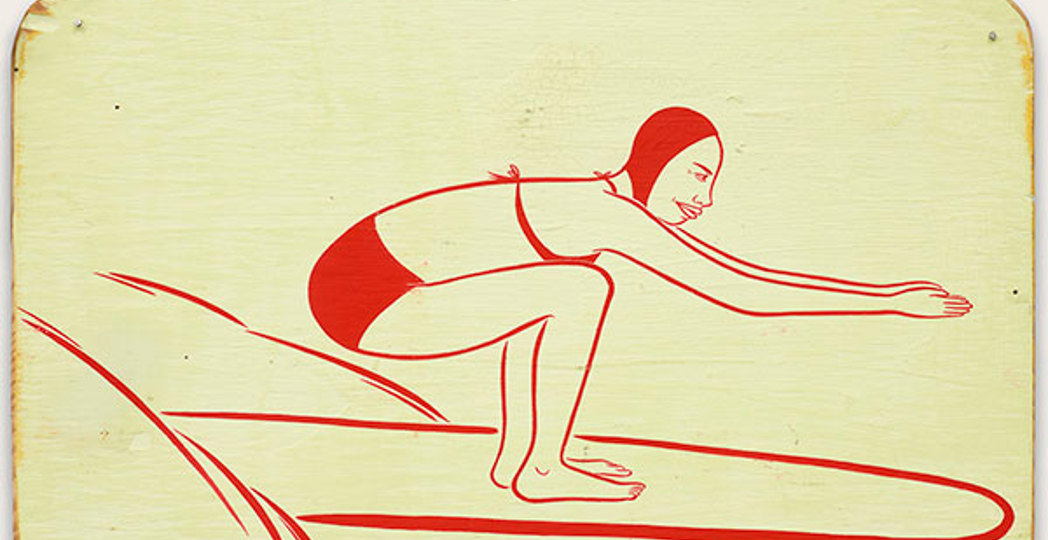Margaret Kilgallen's Pioneering Influence
by Barry Goodrich | Jan. 29, 2020 | 1:00 PM

When Margaret Kilgallen died from breast cancer at age 33 in 2001, the artist left a body of work that vibrantly celebrated women living outside the mainstream. Through graffiti, painting, installation and folk art techniques, she was part artist, part sociologist, creating a distinctive style marked by cartoon-esque street figures and carnival-inspired letters.
That pioneering spirit lives in that’s where the beauty is, the first posthumous exhibit of Kilgallen’s work, which opened Jan. 31 at the Museum of Contemporary Art Cleveland.
“She used bright colors and a graphic sensibility to create her own language and showcase women in a new way,” says MOCA’s chief curator Courtenay Finn, “She was committed to how women should be visible. That’s still an important message to get out into the world.”
The exhibit reflects Kilgallen’s sense of art’s role in a community. Growing up in a Maryland small town, she was influenced by folk traditions such as quilting and banjo playing. After moving to San Francisco, she was drawn to hand-painted shop signs, painting hundreds of murals on building exteriors. Her retro style reflects an interest in printmaking and letterpress with flat, graphic images. The exhibit, which Finn first organized for the Aspen Art Museum, features pieces from previous shows, plus never-before-seen works from the artist’s estate.
Kilgallen’s early inspirations included Southwestern and Mexican art, as well as American folk art. She was a member of the Mission School art movement of the San Francisco Bay Area, inspired by the city’s urban street culture and folk sensibilities.
“The more I saw of her work, the more timely it felt to me,” says Finn, who first encountered Kilgallen’s art during a 2002 printmaking class at the Cleveland Institute of Art. “It was really the impact of a human hand on a place, pulling things off the street and working with public spaces. She was very responsive to her environment and how to create her own language. She was steadfast in her celebration of women’s achievements.”
It’s only appropriate that Kilgallen’s work goes on display at MOCA, as Cleveland has always nurtured its grassroots artistic community. “This city has such a rich history in sign-making and printmaking,” says Finn. “People respond to their environment here. We’re seeing a big resurgence in craft techniques.”
The show includes items Kilgallen made just prior to her death. She continued to work until her final days, displaying the independent spirit and strength captured in her work. “She was so prolific,” says Finn. “She was constantly drawing and painting. The amount of work she produced in such a short time is incredible.”
Trending
-
1
-
2
-
3
-
4
-
5










